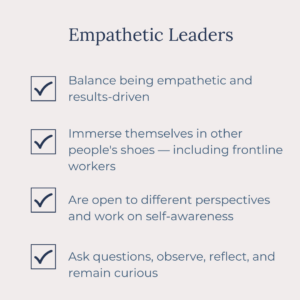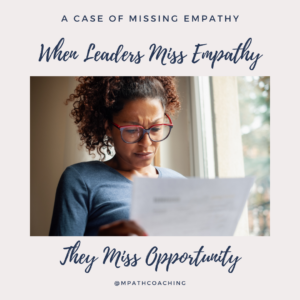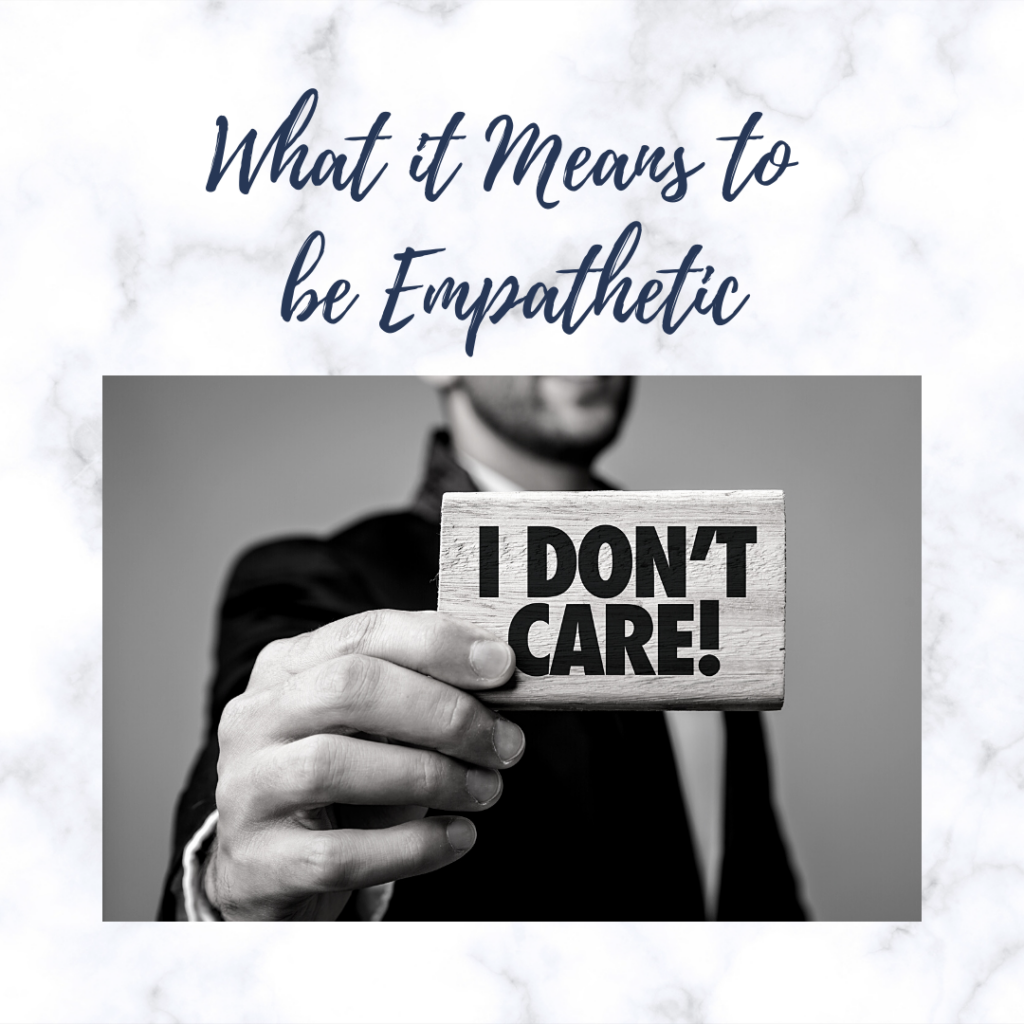Empathy. People first. Human-centric. Inspiring words that dance across corporate taglines, but how much is deeply embedded into the culture and how much is window dressing? What does it really mean to be empathetic at work and how can we demonstrate radical empathy?
Defining Empathy
Empathy means to feel with others, immerse ourselves in their environment, observe, ask questions, and seek to understand. Being empathetic requires us to understand our biases and put them aside in favor of learning other perspectives.
While some people are naturally more empathetic, empathy is a powerful life and leadership lens that can be developed over time. It stems from candid self-reflection and relentless curiosity. Leaders can become more empathetic by observing how work gets done, and asking how team members feel, including positive moments and pain points. If leaders understand the team member journey, they can improve engagement and retention.
Empathy is often misconstrued for being “nice.” Empathy is not about how nice we are, nor does it mean accepting bad behavior. Empathizing with someone does not mean we need to agree with their point of view. Multiple viewpoints can coexist. Instead, we can try to open our heart space and mind space to understand different perspectives, or at the very least, accept their existence.
Empathetic leaders can:
- Be strategic and drive results
- Tailor the amount of empathy for a given situation
- Be nice and still make difficult business decisions

Empathetic Leader Checklist
Empathy may also be confused with sympathy and feeling bad for someone. Rather, empathy involves heightened intuition and awareness of what people are experiencing and feeling. This level of understanding can empower effective decision-making and reveal meaningful insights.
Empathy is about tuning into others and taking a step back to listen and reflect. It demands inclusion, patience, and flexibility, as feelings and perspectives may change.
Empathy can absolutely be balanced with profitability.
A Case of Missing Empathy
She was appointed Diversity, Equity and Inclusion (DEI) chair and had mixed feelings about it. While she was grateful the organization had taken steps to build a more inclusive culture, she felt the process lacked empathy.
Upon selection, her calendar immediately filled with meetings. Colleagues who had not acknowledged her previously were suddenly interested in her opinion, which felt disingenuous. She tried managing her day-to-day work along with the added responsibilities, and soon became overwhelmed. All the while, leadership never asked her how she was doing and how she felt about the new role. She felt she was branded the “default DEI girl” without consideration for how she wanted to make an impact.
While the intentions were good, empathetic leadership was missing.

A Way Forward: How Can We Be More Empathetic at Work?
In this case, leaders can adopt principles of human-centered design and invite employees to the conversation. They can co-create programs that change behaviors and drive DEI at an individual and institutional level.
Human-centered design is rooted in empathy. It involves understanding the actual user and clarifying the problem that needs to be solved. Instead of jumping to solutions, it prioritizes falling in love with the problem and getting to the heart of what needs to be changed.
We can immerse ourselves in the shoes of another by observing their experiences, asking thoughtful questions, and genuinely being curious about them. We can also explore emerging technology, such as virtual reality, to step into their environment and experience life as they do — even if just for a moment.
Lean Into Empathy
Leaning into empathy during moments like this are vital to be a “people-first” organization. It means, not surprisingly, putting people first, understanding what is important to them, and how they experience the world. Through empathy, we can create more sustainable solutions. We can build inclusive teams, foster meaningful relationships, and inspire change.
Though we walk in our own shoes, we may not make time for deeper self-reflection. We can take a closer look at our proverbial shoes and how they may be supporting us or holding us back.
Self-empathy is a good starting point. Observe yourself with compassion and openness, even if you felt you did something wrong. This does not mean making excuses for bad behaviors, but to illuminate and examine them. Turn that empathetic lens inward and learn about your triggers, biases, behaviors, and how you might want to show up differently.
A better understanding of ourselves can lead to better understanding of others.
—Manisha Dhawan
Without a deeper grasp of empathy and how to put it into practice, we may miss opportunities, downgrade empathy to a mere buzzword, and overlook its infinite power.
Copyright © 2021 Manisha Dhawan. All rights reserved.
For more inspiration and tips, follow me on LinkedIn.

Manisha Dhawan, Founder and CEO of MPath Coaching, is a certified professional coach (CPC), MBA and management consultant with 2 decades of experience leading digital innovation and change management initiatives across multiple industries. As a design thinking specialist and lifelong learner, Manisha is passionate about empowering executives to advance leadership skills, maximize team potential, and drive innovation forward. In addition to corporate coaching, Manisha works with professionals on career strategy and human skills development.

